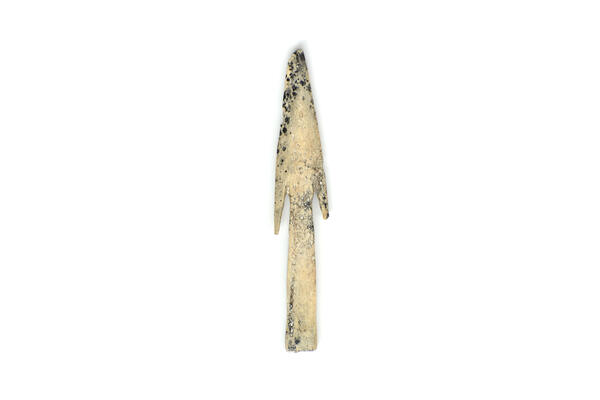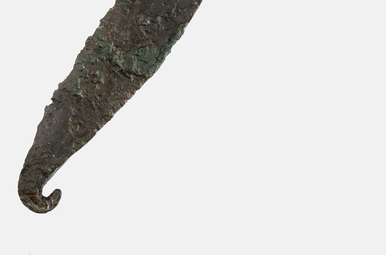The Stepnoye fortified settlement and the Stepnoye-I burial ground are located in Plastovsky District of Chelyabinsk Region on the left bank of the Uy River, 2.5 kilometers northwest of the modern settlement of Stepnoye. The Uy River is a medium-sized river and is the largest tributary of the Tobol River in the eastern part of the Urals. The valley of the Uy River is a conventional boundary between the steppe and forest-steppe zones of the Southern Urals. The “Stepnoye” complex of archaeological monuments is located on the first terrace above the floodplain of the river’s left bank.
The exhibition of Chelyabinsk State Historical and Archaeological Museum-Reserve “Arkaim” presents a bone arrowhead, which was discovered during the excavations of mound 4 of the Stepnoye-I burial ground in Plastovsky district, Chelyabinsk region by the expedition of the Arkaim Reserve led by the archaeologist Dmitry Zdanovich.
Grave pit 13 is one of the largest on the site of the multi-grave mound 4. The chamber ceiling was supported by a pillar. Two children aged about nine years were buried in the pit, placed parallel to each other, heads to the north, crouched on the left side. The finds in grave pit 13 included ceramic vessels, a shield-shaped cheek-piece made of horn, items made of wood with metal staples, stone tools, 13 arrowheads made of stone, bone and horn, a string of silver beads, animal anklebones, and parts of a compound bow. When clearing the grave pit, six tanged arrowheads made of bone and horn were found randomly lying on the floor of the pit.
The arrowhead presented in the exposition is made of a long bone of a large ungulate. It is tanged, two-bladed, with a triangular-shaped tip and two barbs. The arrowhead is widest in the lower part of its tip. The tang is long, flattened, widening towards the end, with a rectangular barb. The cross-section of the stem is rectangular, and that of the tip is rhombic.
Children’s burials of the Sintashta culture show
almost all types of Sintashta weapons — arrowheads, spearheads, bronze axes,
parts of compound bows and horse harnesses. The exceptions are chariots and
bone armor. Researchers assume that weapons could indicate the gender of the
deceased children (boys) or be the evidence of the children’s initiation into
military sciences and/or hunting.




